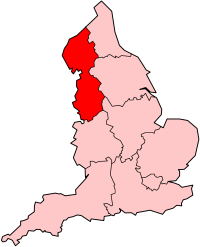|
Bromborough power stations
Bromborough power stations are three electricity generating stations that supplied power to industrial and domestic users in Bromborough, Port Sunlight and the wider Wirral area from 1918 until 1998. Bromborough power station provided public electricity supplies from 1951 to 1980. Central power station Bromborough (1918–1998) was originally owned by Lever Brothers and supplied electricity to domestic users in Port Sunlight as well as electricity and steam to industrial users. Merseyside power station Bromborough (1958–1998) was also owned by Unilever and provided electricity and steam at a range of pressures to industrial users in the locality. All three power stations at Bromborough have been demolished. Bromborough power stationBromborough power station was built as a 210 MW coal-fired station by the British Electricity Authority. Construction started in 1948 on a site (53°20'04.2"N 2°57'44.5"W) adjacent to the River Mersey.The consulting engineers for the scheme were Sir Alexander Gibb & Partners. [1] The plant at Bromborough comprised:[2]
The first machine was commissioned in November 1951, followed by the other sets in December 1951, October 1952, and December 1952.[2] Condenser cooling water was abstracted from, and returned to, the tidal River Mersey.[3] Soon after commissioning the boilers were converted to oil-firing in accordance with government policy to take advantage of differential prices between coal and oil as fuel sources.[4] Bromborough power station was subsequently owned and operated by the Central Electricity Authority (1955–57) and the Central Electricity Generating Board (1958–80) as the UK electricity supply industry was restructured.[4] Operating data for the station throughout its operational life is shown in the table.[2][5][6][7]
The station had a high thermal efficiency and was used intensively from the time it was commissioned. As an oil-fired station its utilisation was reduced following the oil crisis of 1973-4 when oil prices increased significantly. Bromborough power station was closed in 1980[8] and was demolished in 1986. Central Power StationCentral power station (53°20'29.5"N 2°57'51.7"W) was built by Lever Brothers in 1918 to supply electricity for their manufacturing processes at Port Sunlight works. It initially comprised:[9]
The station was adjacent to the River Mersey which provided water for the condensing plant. In 1929 electricity was installed in the houses of Port Sunlight Village.[9] In the early 1930 the Central Power Station was expanded with three coal-fired boilers and a 6.25 MW generating set. The station then had a rated capacity of 11.5 MW.[9] In the 1950s a connection to the National Grid was installed. When local demand was high electricity could be imported from the grid, and conversely could be fed into the grid when local demand was low. Some of the Unilever manufacturing processes required steam. A 1.3 MW British Thomson-Houston back-pressure generator was installed at the Central Station. This comprised a steam turbine fed with steam at 230 psi (15.9 bar) from the existing boilers. The expanding steam drove an alternator and discharged steam at 50 psi (3.4 bar), which was used in the works processes.[9] In the 1970s the oldest three boilers were decommissioned and part of the boiler house was demolished. The generating plant was decommissioned in 1998[10] and most of the site was demolished, the 11 kV control room block was retained until new electricity supplies from the National Grid were installed.[9] Merseyside power stationTo help meet increased demand for electricity and steam Unilever Group built an oil-fired power station (53°20'42.9"N 2°58'33.0"W) on Thermal Road industrial estate Bromborough which was commissioned in 1958.[9]
The total electricity output was 14 MW and the station was designed to generate 80 GWh of electricity for the company's high voltage network.[12] It supplied steam to 15 local companies and electricity to nearly 50 firms.[11] The overall thermal efficiency of the station was about 78 per cent. The station had three slender concrete chimneys. Oil was supplied to the station by a 4-inch diameter pipeline from Ellesmere Port. The power station used 100,000 tonnes of fuel oil a year.[12] The station cost £2.5 million to build and in 1958 was the largest privately owned power station in the UK.[12] It had two 250 feet (76.2 m) high chimneys. In 1964 work started on expanding Merseyside Power Station to meet growing demand. The new plant comprised:[9]
By 1966 the Unilever network had a total generating capacity of nearly 30 MW and provided steam at 50, 110, 230 and 1,500 psi (3.4, 7.6, 15.9 and 103 bar).[9] In 1974, a further extension to Merseyside Power Station was undertaken and comprised a single high pressure boiler (rated at 104 tons/h), and two back pressure generating sets (5.8 MW) operating at 102/45 bar.[9] The specification and condition of the boilers and turbines in the last few years of operation were as follows.[9]
The requirement for steam was reduced by new manufacturing processes and the aging generating plant was decommissioned in 1998.[10] Merseyside Power Station was subsequently demolished.[13][14] References
|
||||||||||||||||||||||||||||||||||||||||||||||||||||||||||||||||||||||||||||||||||||||||||||||||||||||||||||||||||||||||||||||||||||||||||||||||||||||||||||||||||||||||||||||||||||||||||||||||||||||||||||||||||||

